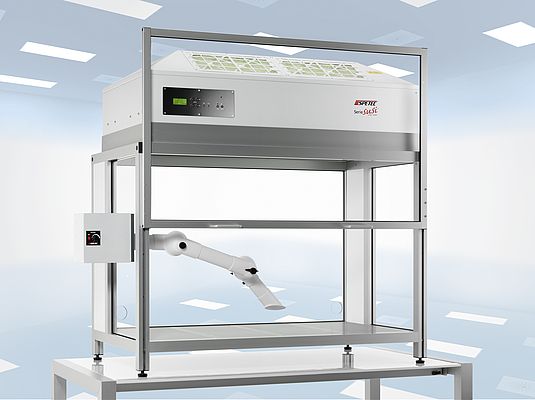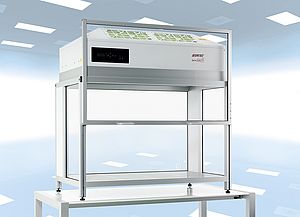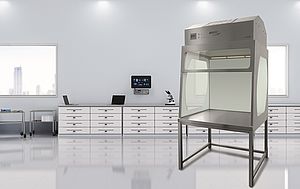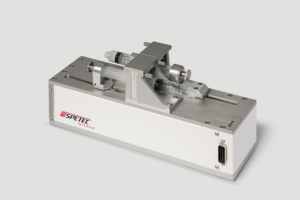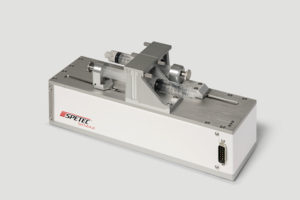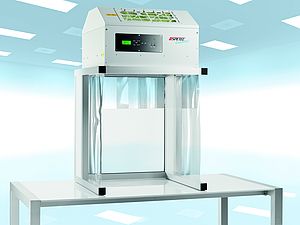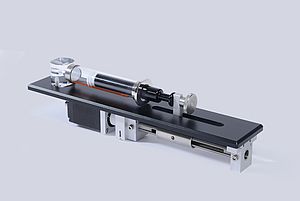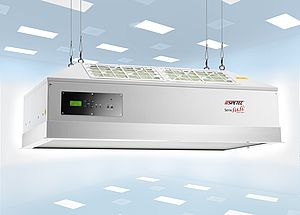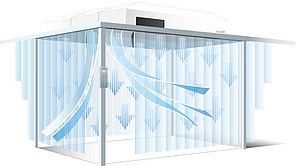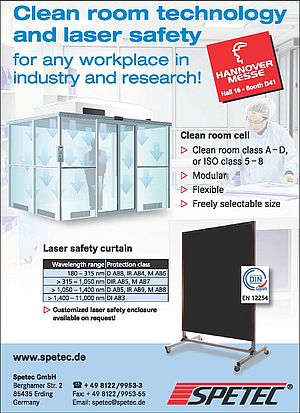Since dirty or offgassing components are not ideal for clean room conditions, Spetec has made the Flow Box EFBS, a laminar flow box with an integrated, acid-resistant extraction unit. The EFBS comprises an extraction unit attached to the side of the box. This extraction unit is, in turn, connected to a universally adjustable telescopic arm. The tip of the telescopic arm can be positioned with pinpoint accuracy to extract the particles or any gas emitted by the source. The component itself is bathed in filtered air. Extraction is continuously adjustable up to a maximum of 1.2 m³/min.
Dirty or offgassing components in a particle-free environment
The Flow Box EFBS provides an effective clean room area of between 0.37 and 1.12 m². Its type H14 filter can filter at least 99.995% of all particles from the air (size: 0.12 μm, MPPS), consequently, the air quality in the airflow is improved although air quality in the airflow is used by at least 10 000 times compared with the ambient air. It reaches ISO class 5 with no building work needed. Moreover, the Flow Box EFBS is made of high-quality materials such as acrylic glass and anodized aluminum.



